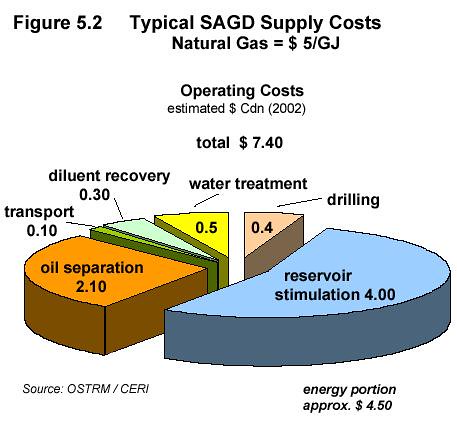Oil and water can for the first time be mixed and separated on demand thanks to a new, reversible surfactant. Surfactants are a whole category of specialized chemicals that are used in all kinds of industry (cosmetics and many others) The surfactant could be invaluable for extracting abundant but relatively inaccessible oil deposits, such as those in “oilsands” found in Venezuela and Alberta, in Canada, the team says.
These mushes of oil, water and rock are very difficult to handle. There is as much as two trillion barrels of oil in the Alberta oilsands. It has been costly to get the oil out. After the sand is mined, then the bitumen can be removed by being mixed with hot water and air which creates a froth. (There is already some 4% water around the sand, separating it from the oil and making this separation easier). The froth is fed into a Primary Separation Vessel (the process is shown in this pdf. The cleaned sand drops to the bottom of the vessel, while the oil is fed into the refining part of the plant, where the product is upgraded, and the coke and sulfur removed from the oil. The water is drawn off, and re-used. The sand is put into the parts of the mine where mining is complete, refilling the land so that it can be returned to its earlier condition
The new surfactant could be used first with carbon dioxide to emulsify the oil and water, making the mixture easier to extract. Then, on exposure to air, the oil and water could be separated, enabling the oil to be extracted and the water re-cycled, Jessop explains.
Another important advantage is that the surfactant is not likely to be environmentally hazardous or long-lived, because air will convert it to the inactive form which then breaks down, the researchers say.
Related info:
A pdf that breaksdown the details of oilsand costs and economics

Note: the costs need to be adjusted, it assumes $5/GJ for natural gas and now it is about $8/GJ. About 40% of the costs (oil separation, water treatment, diluent recovery) look like they could be improved by the new surfactant. This will help increase the amount of oil from oilsands, the profitability of the oilsand companies and Canada and Venezuela.

Brian Wang is a Futurist Thought Leader and a popular Science blogger with 1 million readers per month. His blog Nextbigfuture.com is ranked #1 Science News Blog. It covers many disruptive technology and trends including Space, Robotics, Artificial Intelligence, Medicine, Anti-aging Biotechnology, and Nanotechnology.
Known for identifying cutting edge technologies, he is currently a Co-Founder of a startup and fundraiser for high potential early-stage companies. He is the Head of Research for Allocations for deep technology investments and an Angel Investor at Space Angels.
A frequent speaker at corporations, he has been a TEDx speaker, a Singularity University speaker and guest at numerous interviews for radio and podcasts. He is open to public speaking and advising engagements.

